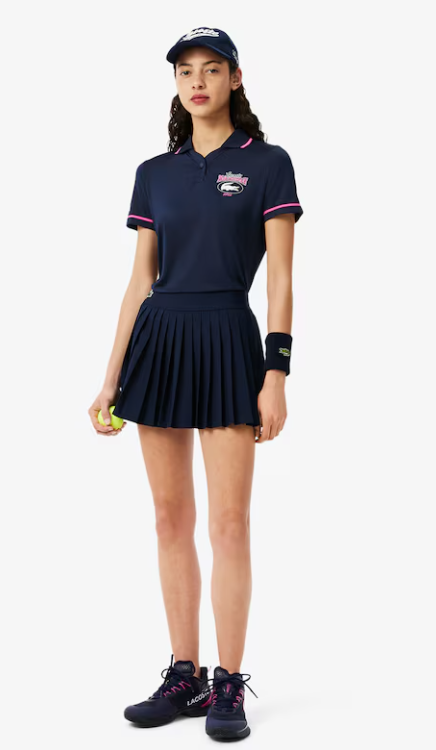lacoste
Lacoste in Canada: How a Heritage Brand Is Redefining Fashion for a New Generation
In the ever-evolving world of fashion, few brands manage to bridge the gap between timeless appeal and modern relevance quite like Lacoste. With its iconic crocodile logo and tennis-inspired origins, Lacoste has become a go-to label for consumers seeking a blend of sportiness, sophistication, and lifestyle wearability. But as the Canadian market becomes increasingly competitive, how is Lacoste positioning itself to stay ahead—and win over both loyalists and new fans?
A Glimpse into Canada’s Fashion Landscape
The Canadian apparel industry has experienced a notable shift in the past five years, driven largely by digital transformation, sustainability concerns, and shifting consumer demographics. According to a 2024 report by IBISWorld, the Canadian fashion retail sector has grown by 2.3% annually since 2019, propelled by e-commerce and the rise of lifestyle-focused brands.
Within this environment, Lacoste’s strength lies in its ability to remain recognizable while continuously adapting to modern tastes. The rise of athleisure and lifestyle branding has given traditional sportswear labels a new playground, and Lacoste’s legacy has positioned it perfectly for this shift. Particularly in urban hubs like Toronto, demand for premium-yet-casual fashion has never been higher. This makes Lacoste Toronto a strategic focal point for the brand’s expansion in Canada.
Target Market: A Cross-Generational Appeal
Lacoste isn’t just chasing the youth market, though its clean lines and heritage vibe resonate strongly with millennials and Gen Z. The brand’s target market in Canada spans style-conscious individuals aged 20 to 45 who appreciate minimalist design with a sporty edge. These are professionals, creatives, and students looking for pieces that transition smoothly from weekday to weekend.
What makes Lacoste Canada especially appealing is its hybrid approach: fashion that performs. The brand’s polos and outerwear, made with breathable and technical fabrics, cater to Canadians who live active urban lives but still demand refined aesthetics.
A 2023 survey by Statista revealed that over 64% of Canadian consumers value functionality as much as design in fashion—a space where Lacoste excels. This positions the brand advantageously against both high-street competitors like Zara and sportswear giants like Nike.
Competitor Landscape: Standing Out in a Crowded Field
Lacoste faces stiff competition in the Canadian market. On one end, you have legacy luxury brands such as Ralph Lauren that appeal to classic fashion tastes. On the other, there’s a wave of streetwear-infused labels like Aritzia’s TEN by Babaton or Lululemon’s casualwear line, which have captured younger demographics with edgy, relaxed silhouettes.
So what sets Lacoste apart?
One word: heritage. While many brands chase trends, Lacoste draws from a near-century of athletic elegance. But it doesn’t stop at nostalgia. Collaborations with contemporary designers like Tyler, the Creator and A.P.C. have refreshed Lacoste’s image without alienating its core customer base. This balance of past and present allows Lacoste to hold its own in a saturated space.
Moreover, its use of sustainable materials—like organic cotton in their polo collections—aligns with the values of today’s ethically minded shoppers. According to Deloitte, 53% of Canadian consumers are willing to pay more for sustainably produced goods. This strategic positioning not only meets demand but gives Lacoste a moral edge over less eco-conscious competitors.
Case Study: Lacoste’s Toronto Flagship
Take, for example, the recent transformation of Lacoste’s flagship store in downtown Toronto. Designed with an open-concept layout and immersive digital displays, the space isn’t just a store—it’s an experience. Foot traffic increased by 18% year-over-year since its relaunch in 2023, with customers spending an average of 17 minutes longer in-store, according to internal brand metrics.
This kind of customer engagement is crucial. In a retail era where physical stores are under pressure, Lacoste has managed to make its brick-and-mortar space both a showroom and a community hub. Events such as in-store DJ nights, sneaker customization workshops, and tennis-inspired styling sessions have helped the brand connect culturally with Toronto’s young urbanites.
Digital Savvy Meets Local Relevance
It’s also worth noting how Lacoste is leveraging digital tools to amplify its market presence. Through geotargeted ads, influencer partnerships, and localized content, the brand has maintained a strong online-offline synergy. The Toronto store, for instance, hosts Instagram-exclusive product drops that drive foot traffic and online engagement in tandem.
The Lacoste Toronto microsite, updated regularly with style edits, event invites, and collection highlights, acts as a key driver of local relevance. This dual-channel approach helps Lacoste stay agile in a retail environment that no longer distinguishes between digital and physical consumers.
Looking Ahead: Growth Through Precision and Authenticity
As Lacoste Canada looks toward the future, its growth strategy will likely hinge on three pillars: maintaining design consistency, deepening local community engagement, and innovating responsibly. With plans to expand their Canadian presence further into cities like Vancouver and Montreal, Lacoste is poised to solidify its reputation as more than a polo brand—it’s becoming a lifestyle staple for the modern Canadian wardrobe.
The fashion world might be fickle, but Lacoste’s ability to adapt without losing its soul is what gives it staying power. In a country as diverse and dynamic as Canada, that’s not just a strategy—it’s the key to lasting success.
